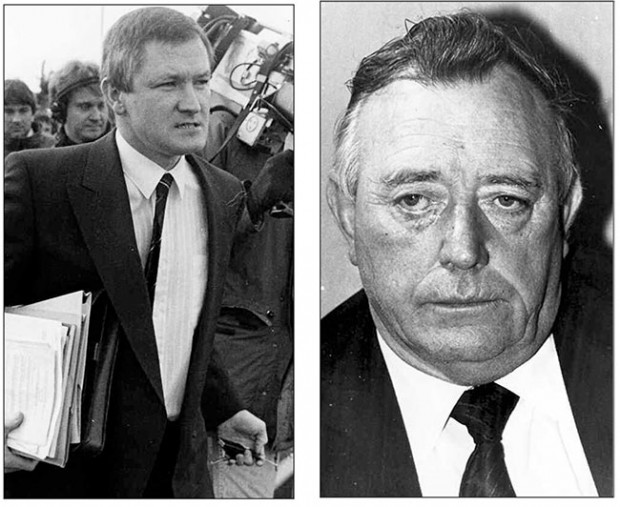12 February 2019
Britain's death squads 1989
Remembering the Past - 30 years ago

• Pat Finucane and John Davey
THE late 1980s saw an escalation in the use of death squads by the British regime in the Six Counties. Since the start of the 1970s, the British Army and the RUC had manipulated loyalist paramilitary organisations as part of their counter-insurgency strategy. The aim was to terrorise the entire nationalist population, killing Catholics solely because of their religion or perceived political allegiances and, where possible, assassinating leading nationalists and republicans.
The complex web of collusion, whereby the various elements of the British crown forces made extensive use of loyalist death squads, continues to be unravelled.
No single case did more to expose the extent of collusion than the murder of human rights lawyer Pat Finucane in 1989. While much more remains to be revealed, the known and acknowledged facts about the murder of Pat Finucane are damning in the extreme for the British Government.
UDA: LETHAL BUT LEGAL
The Ulster Defence Association (UDA) carried out the killing. The UDA was established in 1971 and was heavily infiltrated by British Intelligence from the beginning. Its murders were carried out using the cover-name ‘Ulster Freedom Fighters’. Yet the UDA remained a legal organisation right up until the eve of the Peace Process in 1992, when it was finally banned by the British Government. Intelligence on Pat Finucane was supplied to the killers by a leading British agent in the UDA, Brian Nelson.
Nelson was recruited as a British agent by Colonel Gordon Kerr of the British Army. Kerr was later promoted to brigadier and served as British military attaché in Beijing and as a senior counter-insurgency officer in Iraq. His promotion was based on his service as head of the British Army’s covert counter-insurgency Force Research Unit (FRU) which co-ordinated the use of agents and the operation of collusion in the Six Counties. Much of this, including RUC and British Army culpability in the murders of Pat Finucane and others, was exposed in the third Stevens Report published in 2003.
In 1989, though, what later emerged as truth was dismissed by the Establishment media and politicians as republican propaganda. The British broadcasting ban on Sinn Féin had been introduced the previous autumn. Demonisation of republicans and nationalists was at its height. On 17 January 1989, in the British House of Commons, Home Office Minister Douglas Hogg said there were “a number of solicitors in Northern Ireland who are unduly sympathetic to the IRA”.
Pat Finucane was a leading lawyer in the North. He had acted for loyalists as well as republicans. Like many nationalists, members of his family were involved in republicanism, including his brother, IRA Volunteer John Finucane, who died in a car crash in June 1972. But this was not the reason Pat Finucane was targeted. He had worked in cases which successfully challenged the British Government’s violation of civil rights, including the rights of political prisoners. This was the reason he was singled out for assassination.
The assassins entered Pat Finucane’s North Belfast home and shot him dead as he was sitting down for a meal with his wife and children. The spectre of collusion was soon apparent and the Finucane family led a campaign for an international public inquiry, a campaign that continues today.
JOHN DAVEY
Two days after Pat Finucane’s murder, the assassins came for Sinn Féin Magherafelt District Councillor John Davey, who was shot dead near his home while returning from a council meeting.
Active since the 1950s and through the Civil Rights movement, Davey endured constant harassment from British crown forces.
Speaking at the veteran republican’s funeral, Sinn Féin President Gerry Adams put the killings by pro-British death squads in context:
“It is wrong to project this campaign as mindless violence fuelled by sectarian hatred. It is aimed at the leadership – legal, political or social – of the nationalist people. It is aimed at terrorising us. It is aimed at demoralising us. It will not succeed.”
Pat Finucane was murdered on 12 February and John Davey on 14 February 1989, 30 years ago this week.
Follow us on Facebook
An Phoblacht on Twitter
Uncomfortable Conversations

An initiative for dialogue
for reconciliation
— — — — — — —
Contributions from key figures in the churches, academia and wider civic society as well as senior republican figures





